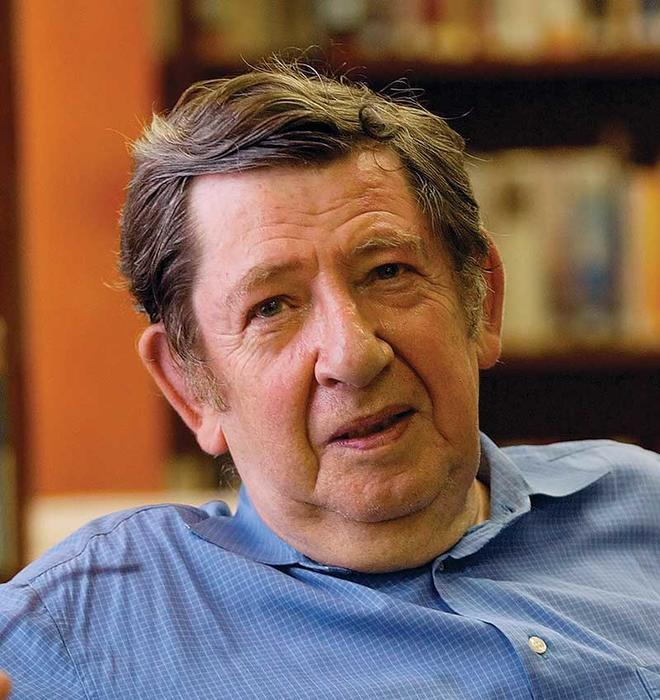
May 22, 1928 – Dec. 22, 2019
To understand the power once wielded by an editorial page and its writers, look no further than the Sackler Wing of the Metropolitan Museum of Art. In the 1960s, as Egypt began construction on the Aswan Dam and risked flooding ancient monuments, Karl Meyer *53 *56 wrote an editorial proposing that Egypt donate a major artifact to the United States since the latter was helping to fund the dam. More than half a century later, the Temple of Dendur still stands in the Met.
Meyer had journalism chops in his blood. Both his father and grandfather were newspapermen. Young Meyer followed in their footsteps and had an illustrious career at The Washington Post and later at The New York Times, among other publications.
At the Post, he would write nine 1,500-word editorials per week, says his wife, Shareen Blair Brysac, adding, “It takes a special skill to write like that.” He wrote 13 books about international affairs and art and archaeology, four with Brysac. “He would write his books in his head, and then it was just a matter of typing,” she says.
Meyer had a brief career as a reporter before heading to Princeton, where he got his master’s degree in public affairs and then a doctorate in politics. After graduation, he was assigned to the Post’s editorial board to write about foreign affairs, a job Brysac doesn’t think he would have gotten if not for his advanced degree. That paper also sent him to London, where he spent five years covering European politics and culture.
“His life really sums up the whole history of journalism of that period,” Brysac says. Meyer reported on major events like Fidel Castro’s rise to power, taking a three-week journey through Cuba, often on horseback. He wrote about the Bay of Pigs invasion, the failed 1961 American attempt to get rid of Castro; the legacy of President John F. Kennedy in the wake of his assassination; and the Soviet invasion of Czechoslovakia.
Brysac likens his work for the Times’ editorial board to being “the secretary of state.” He and other editorial writers would have dinners with prime ministers when they traveled abroad, and world leaders would visit the newsroom during trips to the United States.
“You’d meet everybody in those days because they’d all come to The New York Times like, you know, another government,” she says. “Karl was the most collegial guy I ever met — he never had any enemies.”
In the end, his biggest enemy was cancer. Meyer fought five different kinds of cancer over 15 years, though he was always upbeat. He ultimately lost his battle to prostate cancer.
“He was always going to beat it,” Brysac says. “Somebody like that who’s beaten it four times thinks they can beat it again.”
Editor’s note: PAW learned of the death of Karl Meyer *53 *56 too late to include in last year’s collection of tributes, so we honor him here.
Anna Mazarakis ’16 is a podcast producer.






No responses yet